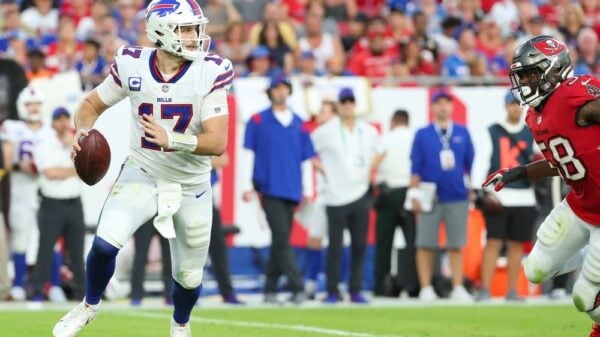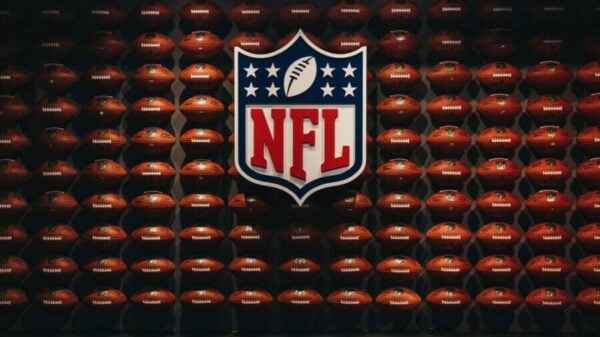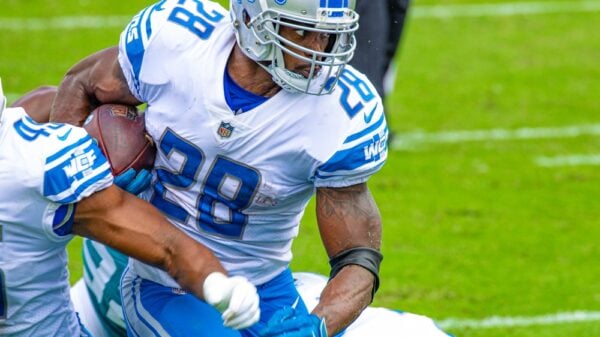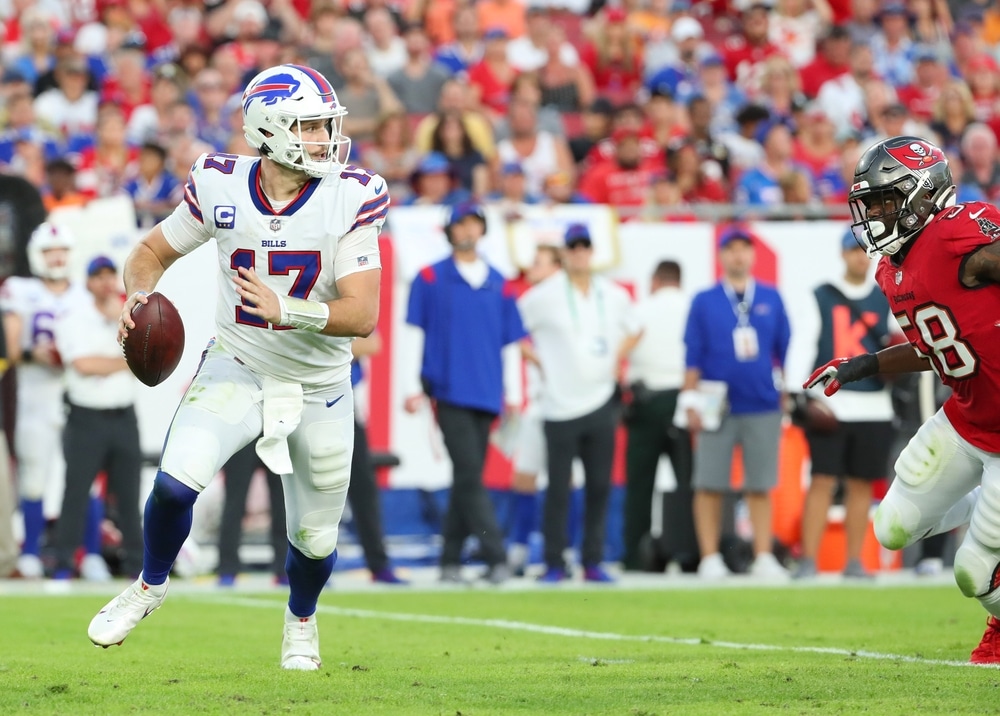Signing Josh Allen to a record-breaking $330 million contract extension sent shockwaves throughout the NFL; however, this was a tactical decision for the Buffalo Bills that opened up new avenues in free agency. If it appears to be a tricky financial balancing act, you’re not mistaken; navigating salary cap management can often feel convoluted. This strategy illustrates the evolving financial landscape within the modern NFL, where teams consistently seek ways to optimize advantages both on and off the field.
For Allen, the choice was straightforward. “I understood the impact of getting an extension done,” he remarked to reporters. “This opens up some space for cap and signing some free agents.” His grasp of the financial nuances isn’t mere conjecture; Allen recognizes the critical role of salary cap flexibility, fully supporting initiatives that not only preserve his legacy but also enhance the team’s roster.
Following this cap-friendly maneuver, the Bills acted swiftly. They allocated $36 million over three years to acquire wide receiver Joshua Palmer, solidified their defensive line with investments exceeding $25 million in players like Joey Bosa, Michael Hoecht, and Larry Ogunjobi, and added another offensive asset in WR Laviska Shenault Jr. For dedicated Bills fans, surrounding their franchise quarterback with elite talent is vital for pursuing championship goals.
To understand the rationale behind Allen’s extension, it’s crucial to explore the complexities of NFL salary caps. Every team must meticulously balance its finances; while base salaries impact the cap instantly, bonuses and specific one-time costs can be prorated throughout the contract—which can stretch to five years. Overall, the financial outcome remains the same, but with league revenues increasing significantly each year, the value of a dollar in 2030 will diminish in comparison to today’s cap conditions. This scenario provides a competitive edge for astute owners willing to invest now. Almost every team is bound by a salary cap, but the methods of handling cash expenditures can vary considerably, as highlighted by Amy Trask, a former CEO of the Oakland Raiders and current CBS analyst. “Different team owners have … different levels of willingness as to cash expenditures,” she noted, underscoring the critical nature of upfront cash flow over rigid cap restrictions.
Drilling down into the details, Allen’s six-year deal—featuring a jaw-dropping $250 million in guarantees—exemplifies this financial strategy. His 2025 base salary is a modest $1.26 million, complemented by a substantial $40 million signing bonus. This financial structuring reduces what would have been a staggering $44.73 million cap hit to about $41.73 million. Navigating salary cap management in the NFL requires precision; if teams wisely trade future cap space for present talent, they can assemble a dominant roster while adhering to regulations.
Prior to entering free agency, the Bills also made a prudent move by extending wide receiver Khalil Shakir’s contract. His four-year, $53 million extension results in a cap hit of just $2.6 million this year, a figure expected to exceed $16 million in 2029—barring any adjustments, which is a gamble many teams are prepared to take in the pursuit of a championship.
However, this creative financial maneuvering carries risks. If a player departs the roster before the deferred cap hit is due, it can trigger a significant financial reckoning in the current season. For teams with championship aspirations, the potential payoff may justify the risks involved, particularly when a Lombardi Trophy is at stake.
Take, for example, the Tampa Bay Buccaneers and the Los Angeles Rams. Both teams made substantial investments to secure titles in 2021 and 2022 but are now grappling with inflated cap numbers as some star players have retired. Recently, the Philadelphia Eagles have taken this strategy even further, skillfully managing cap space while acquiring standout players.
The financial analysis website Over the Cap indicates that many NFL teams could reduce their cap numbers by an impressive $46.2 million this year through contract restructures. In contrast, Philadelphia has utilized its cap space strategically, ending the year with just $4.2 million unspent—a testament to their aggressive pursuit of success.
Jalen Hurts also plays a significant role in this financial saga; his base salary remains below $1.4 million on a $51 million-per-year contract, providing the Eagles essential flexibility—flexibility that has enabled them to acquire game-changing players like Saquon Barkley on their path to a Super Bowl victory. Spending becomes an art form, with the Eagles demonstrating this philosophy by ranking third in cash expenditure in 2024, investing $328,561,211 into talent—30% more than the salary cap allows.
Similarly, the Kansas City Chiefs are employing strategic maneuvers; recent contract adjustments for players like Patrick Mahomes and Chris Jones have resulted in a staggering $50 million in cap space being freed up this year. While such financial strategies demand finesse, the potential rewards can be transformative for those willing to embrace the risk.
Trask provides insight into the current state of the NFL, suggesting that while historically high-revenue teams enjoyed advantages, the overall growth of the league has created a more level playing field. “Cash may well now be less of an issue for some clubs,” she remarked, indicating that opportunities are expanding for all franchises as the NFL landscape evolves.
Today, some teams are even exploring private equity for financial support. Trask observed, “I absolutely think there are some owners who are seeking those investments, such that they have greater latitude in terms of cash expenditures.” This evolving strategy offers teams alternative options as they navigate the fresh financial landscapes of the league.
Previously, the Buffalo Bills found themselves constrained by financial limitations. However, under the guidance of Terry and Kim Pegula—who purchased the franchise for $1.4 billion in 2014—the team has branched out into a more aggressive spending strategy in recent years. Currently, Spotrac ranks them second in cash commitments for 2025, indicating a shift toward a more assertive financial philosophy.
Notably, the Pegulas sold roughly 20% of the franchise to limited partners last year, including a deal with private equity firm Arctos, netting over $1 billion. The Bills are also in the midst of constructing a $2.2 billion stadium, with $850 million sourced from public funds—a project anticipated to significantly boost their annual revenues once completed.
As the Bills eye further high-value signings, GM Brandon Beane remarked on their intention to emulate franchises like the Eagles, known for their strategic spending in crucial positions. “Some of it is organizational,” Beane stated. “Like, ‘Are you willing to spend [above the salary cap]?’ and that starts with Terry Pegula. He provides us with the resources to be aggressive at critical times.”
Ultimately, when teams adopt a “pay now, win later” philosophy, they are banking on sustained success in a rapidly changing NFL climate. Since 2022, the salary cap has surged by approximately 35%, with projections suggesting this upward trend will continue, especially with new media deals expected in 2030. Teams are essentially borrowing salary cap space without interest burdens, compelling them to strive for greatness while the opportunity exists.
As Allen reportedly texted Bosa before his signing, “If we do what we set out to do, we could be immortalized in this town.” Once that aspiration comes to fruition, no one will be counting pennies—except for the diligent front office staff tasked with managing the long-term impact of these financial strategies. In an intense league where talent reigns supreme, the combination of strategic spending and roster-building becomes the roadmap to success.
Image Source: Steve Jacobson / Shutterstock






















